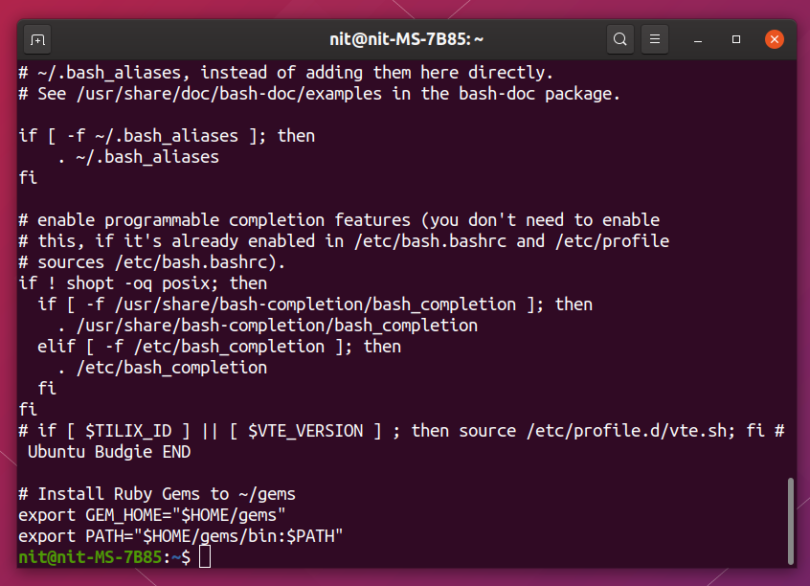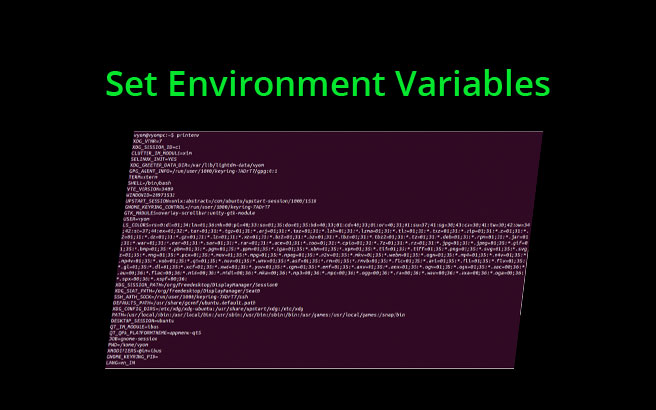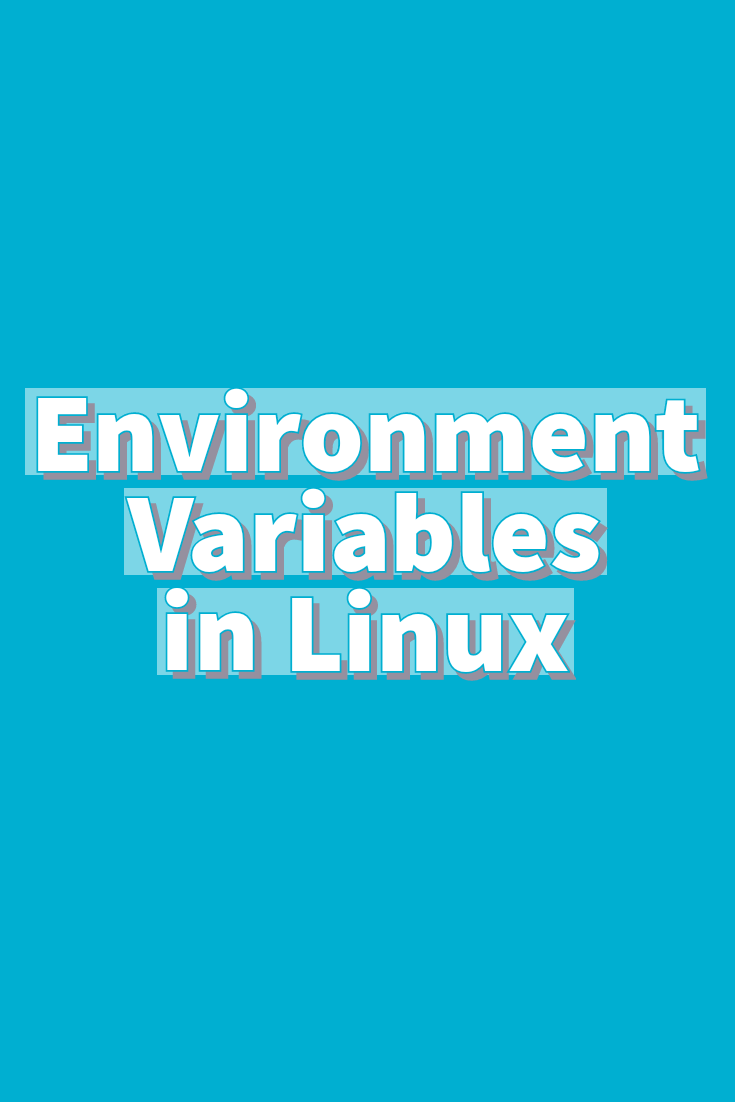Linux Set Environment Variable Command Line
Linux Set Environment Variable Command Line - Env The command allows you to run another program in a custom environment without modifying the current one When used without an argument it will print a list of the current environment variables printenv The command prints all or the specified environment variables set The command sets or unsets shell variables Environmental variables are used to pass information into processes that are spawned from the shell Shell variables are variables that are contained exclusively within the shell in which they were set or defined They are often used to keep track of ephemeral data like the current working directory What Are Environment Variables Environment variables are the variables specific to a certain environment For example each user in an operating system has its own environment An admin user has a different environment than other users do for example
Whenever you are trying to find a simple and effective way to increase your productivity, look no further than printable design templates. These time-saving tools are free and easy to use, providing a series of advantages that can help you get more done in less time.
Linux Set Environment Variable Command Line

Windows 10 Set Environment Variable Command Line
 Windows 10 Set Environment Variable Command Line
Windows 10 Set Environment Variable Command Line
Linux Set Environment Variable Command Line Firstly, printable design templates can help you remain organized. By supplying a clear structure for your jobs, order of business, and schedules, printable templates make it much easier to keep whatever in order. You'll never need to stress over missing due dates or forgetting important tasks again. Utilizing printable design templates can help you save time. By getting rid of the need to produce new files from scratch whenever you need to finish a task or prepare an occasion, you can focus on the work itself, instead of the documentation. Plus, many design templates are adjustable, permitting you to customize them to fit your requirements. In addition to saving time and staying arranged, utilizing printable design templates can also assist you remain inspired. Seeing your development on paper can be an effective motivator, motivating you to keep working towards your goals even when things get difficult. Overall, printable templates are an excellent method to enhance your efficiency without breaking the bank. So why not give them a try today and begin accomplishing more in less time?
How To Set Environment Variables In Linux DevsDay ru
 How to set environment variables in linux devsday ru
How to set environment variables in linux devsday ru
1 Overview Environment variables hold information about our login session They re stored for the system shell used when we execute commands Usually when we execute a command we don t manipulate the environment variables directly However sometimes we want to change the system s predefined environment variables for one or more commands
The printenv command can be used to list all environment variables on a Linux system printenv Printing all the environment variables used by this Linux system To list a specific variable just pass the name of it to the command printenv SHELL bin bash You can also check multiple variables simultaneously
How To Set Environment Variables In Linux
 How to set environment variables in linux
How to set environment variables in linux
Linux How O Set Environment Variable ION HowTo
 Linux how o set environment variable ion howto
Linux how o set environment variable ion howto
Free printable templates can be an effective tool for boosting efficiency and accomplishing your objectives. By choosing the ideal design templates, incorporating them into your routine, and personalizing them as needed, you can improve your daily jobs and maximize your time. So why not give it a try and see how it works for you?
Environment variables are used in Linux to define the settings and configuration of the terminal window and shell There are different types of environment variables including system wide variables session wide variables and shell specific variables
The syntax is Here is how to set env variable in linux using env command env VAR NAME VALUE env VAR NAME VALUE CMD1 ARG1 env options VAR NAME VALUE CMD1 ARG1 Please note that if no command name is specified following the environment specifications the resulting environment is displayed on screen